Balmoral Software
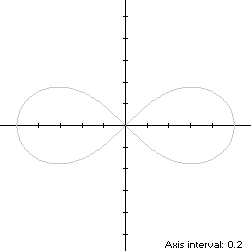
Balmoral Software

for 0 ≤ t < 2π. As t increases from 0, S starts from its right-hand edge at (1,0), moves through Quadrant I to the origin at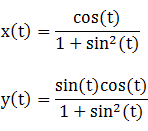
 when
when
 so the width x height of its
bounding rectangle is
so the width x height of its
bounding rectangle is 
and its area is 1.
 We have
We have
so by (L1), the perimeter of the convex hull is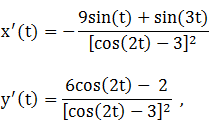
which is about 9% shorter than that of the lemniscate.
The line segments of the convex hull create a rectangle of area
 as shown in blue in the left
diagram below. By (A1), the area of the
convex hull is
as shown in blue in the left
diagram below. By (A1), the area of the
convex hull is
which is about 30% more than the area of the lemniscate.
is maximized at 1, so the circumradius is 1.
This expression is maximized in the first quadrant at
so the circumellipse dimensions are
For verification, we have
 of S, so a
candidate for the lobe incircle has radius
of S, so a
candidate for the lobe incircle has radius
 and center abscissa
and center abscissa
 The candidate circle must be
contained within the lobe, so we require that
The candidate circle must be
contained within the lobe, so we require that has a zero at t* = 0.916671. The corresponding coordinates are
x* = 0.373344We then havey* = 0.296279
For verification,
Figure Parameters Perimeter Area Centroid Incircle (lobe) R = 2.221442 0.392699 (0.612372,0)q Inellipse (lobe) a = 0.417771
b = 0.3421142.393169 0.449013 (-0.582229,0) Lemniscate of Bernoulli 5.244115 1 Convex hull 4.785822 1.299038 Circumellipse 5.093049 1.570797 Circumcircle R = 1 6.283185 3.141593
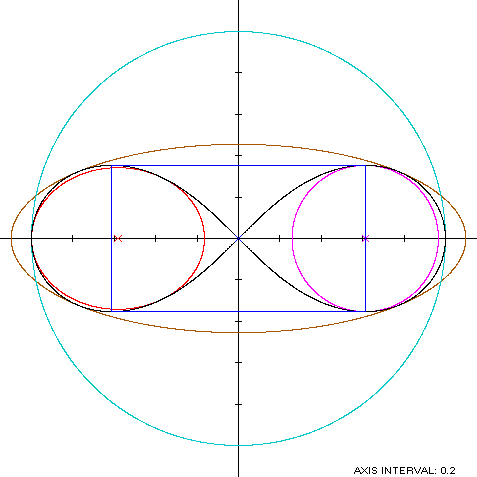 | 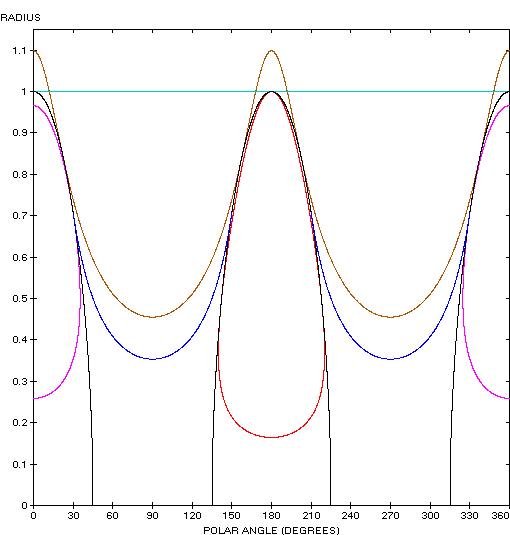 |
| Bug-eyed Space Jockey |
The Lemniscate of Bernoulli (red) is a member of a group of figure-8 curves described on these pages, including (inside to outside) the dumbbell curve, the bowtie, the Lemniscate of Gerono and the dipole:
Copyright © 2021 Balmoral Software (http://www.balmoralsoftware.com). All rights reserved.